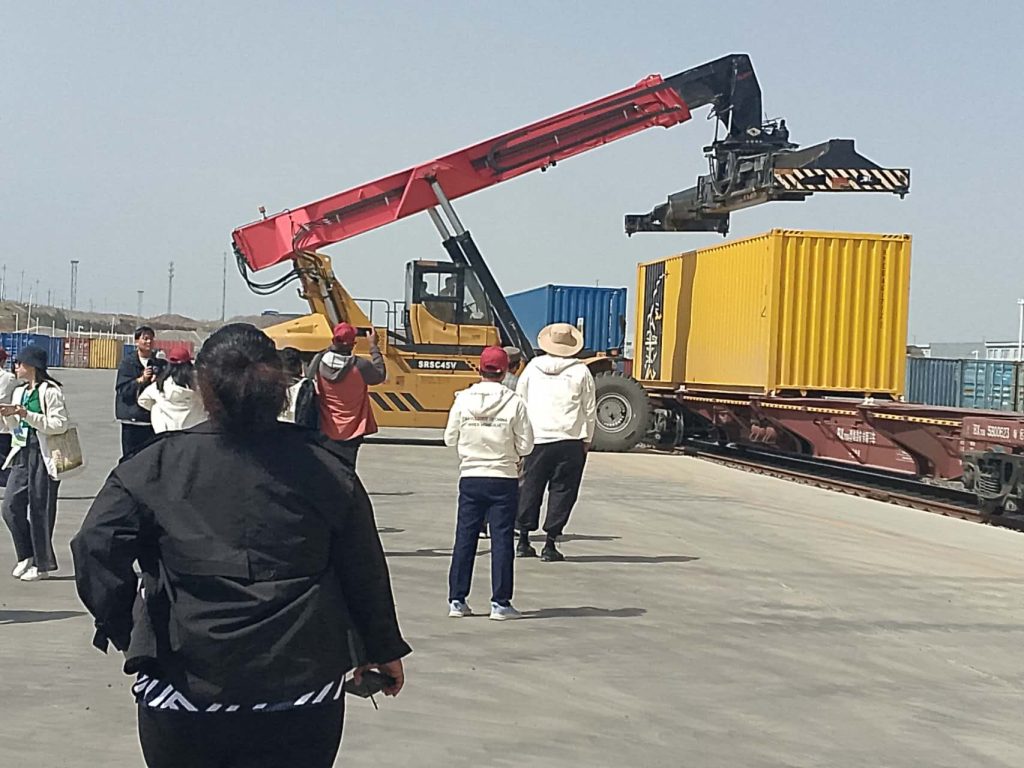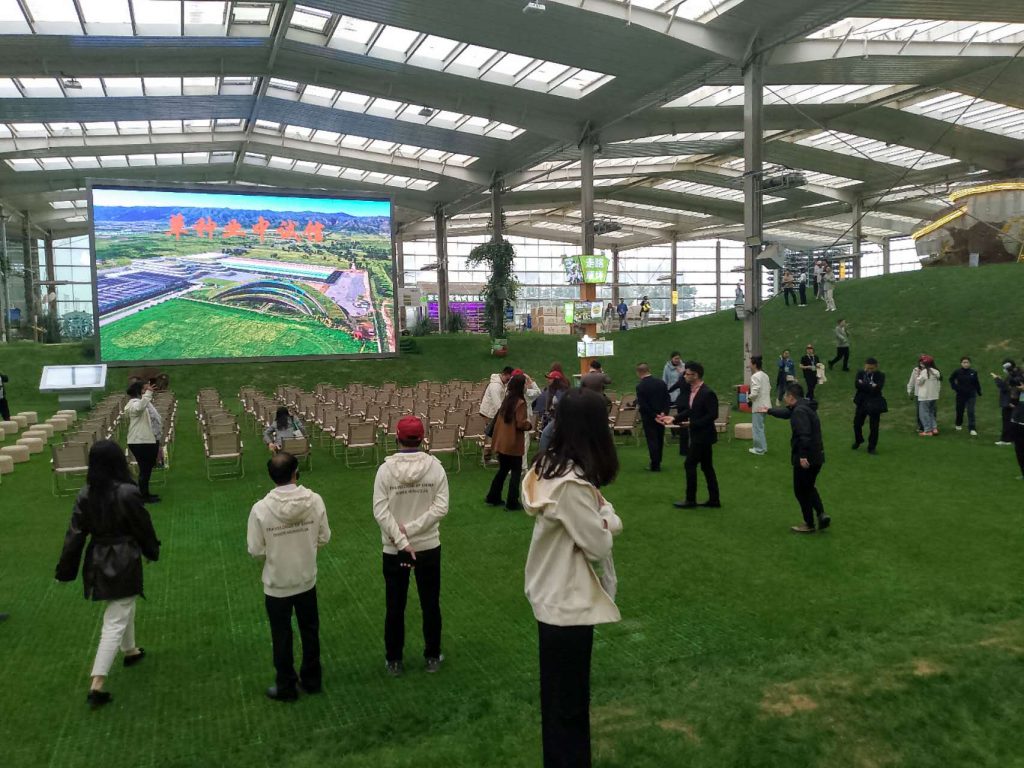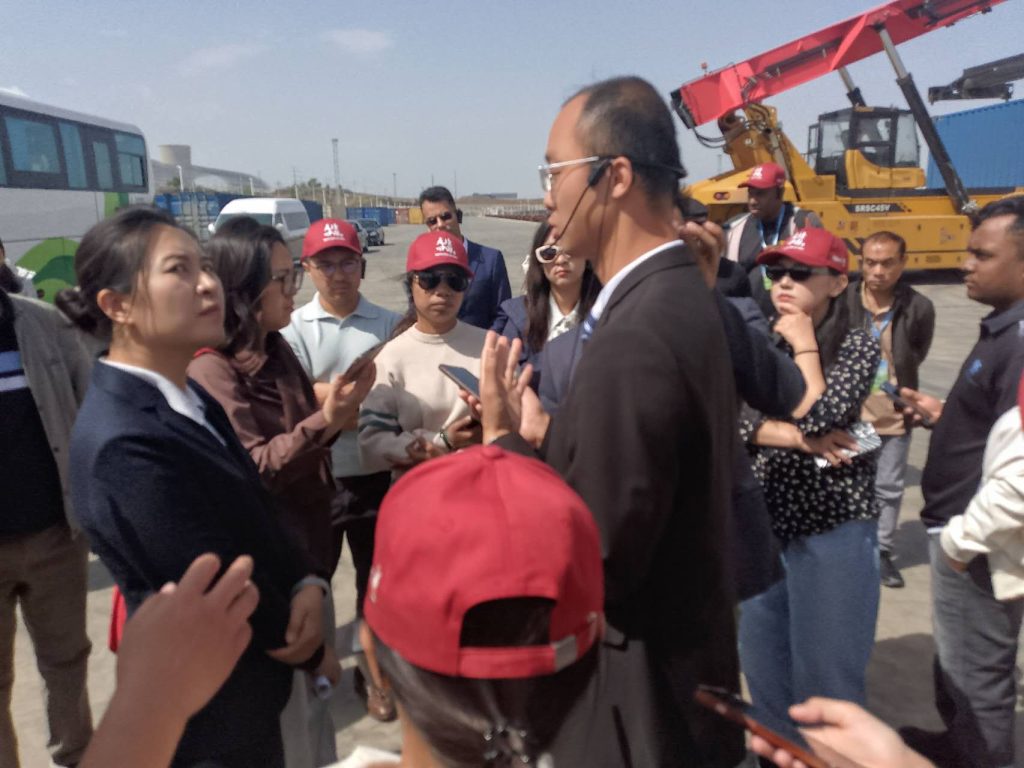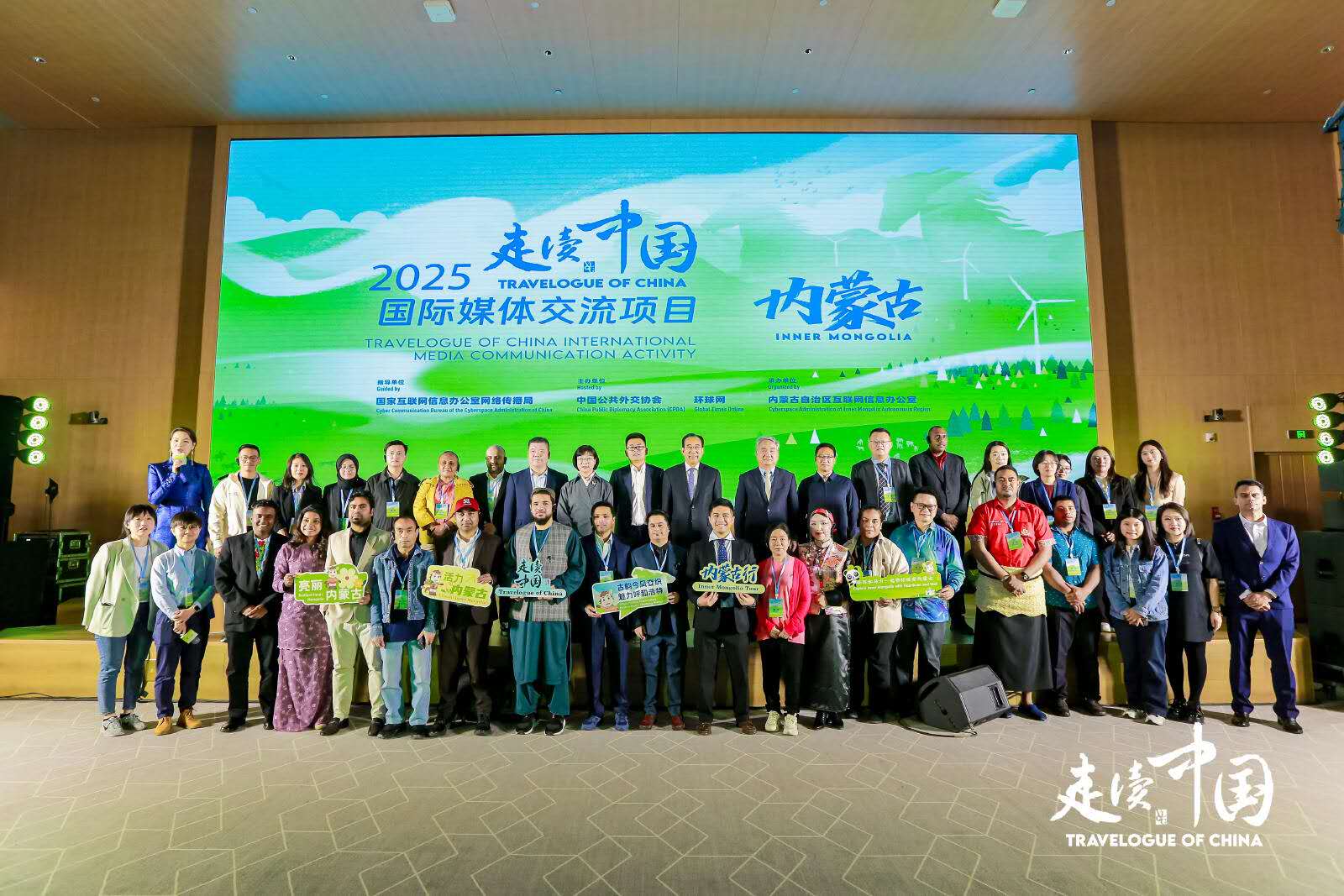THOUGH taken within a span of four days, the 2025 “Travelogue of China” organized visit for international journalists in the cities of Hohhot and Ulanqab in the Chinese Autonomous Region of Inner Mongolia has provided an immersive and insightful experience for participants, including myself.
The annual “Travelogue of China International Media and Communication Activity” was introduced with the objective of giving international journalists hosted by the China International Press Communication Center (CIPCC) for study tours in China the opportunity to visit other cities apart from Beijing to see and experience firsthand the realities therein, and report them as they are to their countries and the world.
Our visit commenced in the capital city Hohhot on Monday 12 May with the launch of the China Public Diplomacy Association (CPDA)-Global Times Online organized “2025 Travelogue of China International Media and Communication Activity – Inner Mongolia Tour” at the National Center of Technology Innovation for Dairy by the CPDA President Wu Hailong, Director of the Cyberspace Administration of the Inner Mongolia Autonomous Region, Li Peiyan and Global Times Online General Manager Shan Chengbiao.
In his speech, Wu underscored the significance of the travelogue initiative and why Inner Mongolia was chosen as one of the visit destinations for this year.
“The Travelogue of China activity, co-hosted by the CPDA and Huanqiu.com, aims to provide friends from the media with an opportunity to observe, understand, and interpret China to gain deeper insight into this country.
“Some of you may wonder: with so many provinces and cities across China, why choose Inner Mongolia this time? Let me tell you: Inner Mongolia shares commonalities with other parts of the country, but it also has unique characteristics that set it apart.
“Like other regions, Inner Mongolia has kept pace with the times, developed in parallel with the rest of the country, and achieved remarkable success.
“However, it possesses distinct features and charm. Have any of you visited Inner Mongolia before? What did you imagine it to be like? Some may have pictured it as a backward, desolate, and distant place. If so, this visit will surely shatter that impression,” Wu said.
In turn, Shan took the opportunity to highlight the Global Times Online’s commitment to its mission of “Connecting China and the World.”
“We have always strived to showcase a diverse world to Chinese readers and interpret a fascinating China to overseas audiences, building a bridge for people-to-people exchanges.
“In presenting a credible, adorable, and respectable image of China, huanqiu.com has joined hands with friends worldwide to expand consensus, pool strengths, and grow our network of partnerships, composing chapters of exchange and cooperation.

“CIPCC, China Public Diplomacy Association, and huanqiu.com are old friends who have jointly organized numerous communication activities—including themed visits, reporting tours, dialogues, and internships—for media delegations, forging deep friendships with overseas peers.
“Since its launch, Travelogue of China has been successfully held seven times, inviting nearly 130 journalists from the Asia-Pacific, Eurasia, Latin America, the Arab region, and Africa to visit 17 cities,” Shan said.
Hohhot City Visit Itinerary:
The launching ceremony was ensued by our first visit to the National Center of Technology Innovation for Dairy’s Yili Modern Intelligent Health Valley. On Tuesday 13 May, we visited the Inner Mongolia Data Exchange Center, AI Experience: Yungu Exploration Port, Hohhot International Sculpture Park, M-Grass Ecology and Environment Group, and Chilechuan Grassland.
National Center of Technology Innovation for Dairy
This center was set up to address major issues in China’s dairy industry and develop cutting-edge technologies dedicated to ensuring high-quality development, and global influence in dairy science and technology. Here we were introduced to one of the world’s top five dairy enterprises and the largest in Asia, and learned about China’s notable achievements in the Dairy Industry Revitalization Initiative.

Inner Mongolia Data Exchange Center
This is Inner Mongolia’s sole designated platform for data transactions. As a key infrastructure project that supports the development of the data element market and digital economy, the center offers a wide range of service, including authoritative data transaction registration, widely recognized data trading, automated matching for data products, leading technologies for data circulation, integrated computing resource transactions and comprehensive operational management. The center aims to build a data circulation and trading platform that services entire China by offering an efficient, convenient and secured market-oriented data trading services in accordance to relevant laws and regulations.
AI Experience: Yungu Exploration Port
This is a cutting-edge digital exhibition space with sections on aerospace, campus safety, national defense and military affairs, and virtual reality. By offering science and technology study tours, including immersive science technology experiences, and digital tourism, the port showcases digital forms of cultural products, projects and business models such as “cultural tourism+ digital technology” and “cultural tourism + education” to enhance the supply of digital cultural products and enrich related customer experience and business scenario.

Hohhot International Sculpture Park
The design of this museum is centered on the theme “Northern Frontier Culture”, a significant aspect of Chinese civilization encompassing various cultural, historical and geographical elements. It contains exhibitions of classic sculptures by renowned Chinese and foreign artists, diverse and fascinating sculptures that reflect the mutual learning and exchange between different civilizations as well as those that reflect the splendid and diverse traditional Chinese culture and the spiritual strength of the modern Chinese civilization.
M-Grass Ecology and Environment Group
This company specializes in grass-seed technology. it provides high-quality products and innovative technical services for ecological restoration and grass-seed production. It operates over 30 national and provincial scientific research platforms. including China’s National Engineering Technology Research Center for Wind Erosion and Desertification Control and Key Laboratory for Cultivated Land Fertility Protection and Improvement in Agro-Pastoral Ecotones. In collaboration with more than 70 research institutes, universities and enterprises, M-Grass co-established the National Grass Industry Innovation Center. The company has developed an advanced grass-breeding technology system and led the formulation of 513 standards, including the Technology-Specification for Restoration of Degraded. It has applied for 968 patents, ranking 6th globally in grass-seed industry patents, and has been approved to operate China’s first national intellectual property operation center for the grass industry. To date, M-Grass has restored nearly 2.2 million hectares of various ecological landscape, including grasslands, mines, deserts and saline-alkali land.

Chilechuan Grassland
Also called the “Ten-Thousand-Mu Grassland” or the “Black Garden” of the “Blue City (Hohhot)”, the Chilechuan Grassland was the main venue for the celebration of the 70th anniversary of the founding of the Inner Mongolia Autonomous Region. It is one of the 39 grasslands included in China’s national grassland nature park project.
Ulanqab City Visit Itinerary
In Ulanqab City, our tour itinerary included the Chahar High-Tech Development Zone, Yunda Holdings Northern Headquarters and Smart Industry Base, Ulanhad Volcano Cluster, Chayouqian Banne Cold-Tolerant Vegetable Academician Workstation, Shudu Kaida Food Co Ltd, Plant Factory Complex Project (Strawberry Base), and Qisumu International Logistics Park. Our visit commenced on Wednesday 14 May and concluded on Friday 16 May.

Charhar High-Tech Development Zone
This high-tech development zone occupies a strategic location in the confluence of China’s Beijing-Tianjin-Hebei and Hohhot-Baotou-Yulin-Yinchuan economic corridors. The Chahar High-Tech Development Zone offers exceptional connectivity via adjacent high-speed rail and airport infrastructures, serving Inner Mongolia’s pivotal hub for east-west industrial linkages, and north-south trade integration.
Yunda Holdings Northern Headquarters and Smart Industrial Base
This is China’s first full-scale 13 megawatts onshore and turbine testing platform, and plays an important role in driving corporate innovation and technological advancement. It has an annual production capacity of 5 gigawatts in wind power equipment, and flagship products ranging from 4 megawatts to 10 megawatts + onshore wind turbines to serve Inner Mongolia and surrounding regions. This initiative is aimed at elevating both the scale and quality of renewable energy equipment manufacturing.
Ulanhad Volcano Cluster

Located between Ulanhad Sumu of Chayouhou Banner and Bayan Qagan Town covers approximately 280 square kilometers and comprises 20 volcanoes with unique geological landscape such as grassland volcano formations and lava landforms. It is the only Holocene-era volcanic cluster with recorded eruptions along the southern margin of the Inner Mongolia Plateau and has been featured in the Chinese National Geographic magazine. In recent years, Chayouhou implemented the national rural revitalization strategy by leveraging the unique the site’s geological and ecological advantages of unique geological landscape to develop the homestay industry to meet the growing demand of modern tourists for immersive experiential stays. This initiative simultaneously boosted sales of local agricultural and livestock products, and stimulated growth across upstream and downstream industries.
Chayouqian Banner Cold-Tolerant Vegetable Academician Workstation
This is China’s first workstation dedicated to cold-tolerant vegetable research. Ulanqab City’s unique geographical location and climatic conditions provides natural advantage for the establishment of this research station. Over the past decade, it has facilitated the expansion of Ulanqab’s cold-tolerant vegetable cultivation to approximately 33,333 hectares, generating an annual output value of 2.4 billion yuan.
The Shudu Kaida Food Co Ltd
Established by the Chayouqian Banner, this company is a subsidiary a subsidiary of Beijing Kaida Hengye Agricultural Technology Department Co Lt. As a national high-tech enterprise and a national key leading enterprise in agricultural industrialization, the company integrates production, education, research, cultivation, processing and sales into a comprehensive operational system. The company specializes in developing French Fries, crispy fruit and vegetable chips, bean products and other snack lines. Its products are distributed across 32 Chinese provinces and municipalities, including Beijing, and exported to 30 countries, including Germany and Japan.

Plant Factory Complex Project (Strawberry Base)
This plant factory spans 1.57 hectares and consists of 18 cultivation modules – 17 dedicated to strawberry cultivation and one to leafy greens. Each strawberry module yields 8,640 kg annually, which is 15 times the output of open field cultivation, and 12 times that of greenhouse production per equivalent area. When operating at full capacity, the projected is expected to produce 146 tons of strawberries annually, generating annual sales of 30 million yuan.
Qisumu International Logistics Park
This international logistics park covers a planned area of 14.01 square kilometers. It is bounded by the Quanyulin Avenue to the east, Baoshui West Street to the south, Xiqiao Road to the west, and Erguang Expressway to the north. Serving as an important corridor for China’s access to Mongolia, Russia and Eastern European countries, it offers convenient connectivity to the domestic markets of Beijing-Tianjin-Hebei region and moreover, if serves as a gateway for international trade. The park enjoys unique advantages in coordinated development and functional synergy due to its strategic location.

Key takeaways from Hohhot-Ulanqab Visit
In a nutshell, the fundamental factor I learned from this visit is the importance of ensuring the meticulousness of national economic development strategy.
China has a meticulously planned comprehensive development strategy framework that integrates state-level regional development strategies such as the Belt and Road Initiative, Beijing-Tianjin-Hebei Integration Plan, Yangtze River Economic Belt, Guagdong-Hong Kong-Macau Greater Bay Area, Yangtze River Delta Integration Plan. This national economic development strategy is innovation-driven, and builds upon national successes on various development fronts over the past decades.
The high-tech technological advancements witnessed in Hohhot and Ulangab are not standalone initiatives and achievements, but are connected to the national economic development strategy that embraces nationwide economic development at the same pace and intensity to ensure equality in the quality of prosperity for all Chinese nationwide.
Moreover, the success of China’s national economic development strategy is attributable to the visionary and responsive leadership of the Communist Party of China (CPC) based on China’s own form of democracy. Chinese-style democracy embraces China’s history and cultural values, and the Chinese culture embraces harmony, benevolence, justice and moral integrity, filial piety, loyalty to family, friends and country, and wisdom. These values provide an enabling environment for peace and political stability, which are crucial factors for economic development, growth and prosperity.
By DELI-SHARON OSO
In Beijing, China





